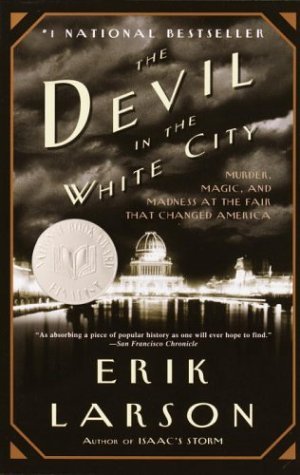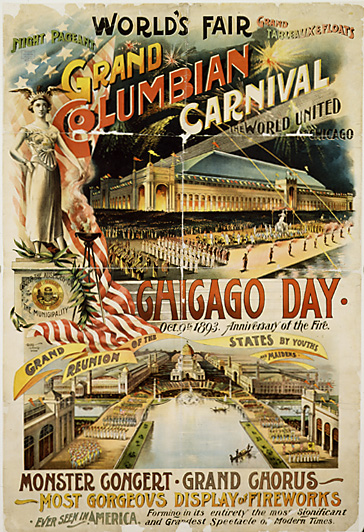
Devil in the White City By Eric Larson

Daniel Burnham is one of the chief architects of Chicago's World Fair of 1893, and H.H. Holmes is a skilled murderer. Both men were talented individuals and on top of their game. Burnham was able to reconstruct Chicago and turn it into a city capable of successfully hosting a world renown event, and Holmes was able to deceive businesses, employees and young women alike into murder-related plots and deathly encounters.
Eric Larson alternates between these two characters and combines their stories to form a text rich in history, descriptions and facts about Chicago as an emerging city and major metropolis. What can be taken away from this novel is a lesson in history illustrating the progression of Chicago starting from a state of desolation (as a result of the Great Fire) and ending as a commercial, cultural and financial success.
The official purpose the 1893 World's Fair of 1893 was supposed to be a commemoration of Columbus's historic voyage. However, the leaders of Chicago and the Fair took it to the next step. It turned into a cultural statement, a symbol of power, an influence to both the United States and foreign countries. The leaders of the rebuilt city made it a demonstration of Chicago's speedy recovery and continuing promise.
Chicago becomes the base-city for America's transcendence up into the corporate industry, the home of business rising into national influence, and the source of some of the greatest acheivements in science and technology at one point in time. Chicago's Exposition of 1893 can be seen as a blueprint for modern America. 9
| Tickets Sold:
|
approx
6.8
million |
|---|---|
| Free Admissions: | approx. 6 million |
| General Admission Costs: | Adults: 50 cents |
| Children ages 6-12: 25 cents | |
| Children under 6: Free | |
| total attendence: | approx. 27.5 million |
| officially opened: | May 1, 1893 |
| largest single day attendance: | October 9, 1893 (Chicago Day), over 700,000 in attendance |
| attractions: | 41 total (including a mini Eiffel tower, the Ferris Wheel and a Persian theatre) |
| buildings erected: | 200+ |
| financial surplus: | $1 million |
| continued traditions of cultural influence: | Columbus Day (the holiday), the Pledge of Allegiance (with school children), hamburgers and Disney World |
| consumer product debuts: | Cream of Wheat, Shredded Wheat, Pabst Beer, Aunt Jemima syrup, and Juicy Fruit gum |
